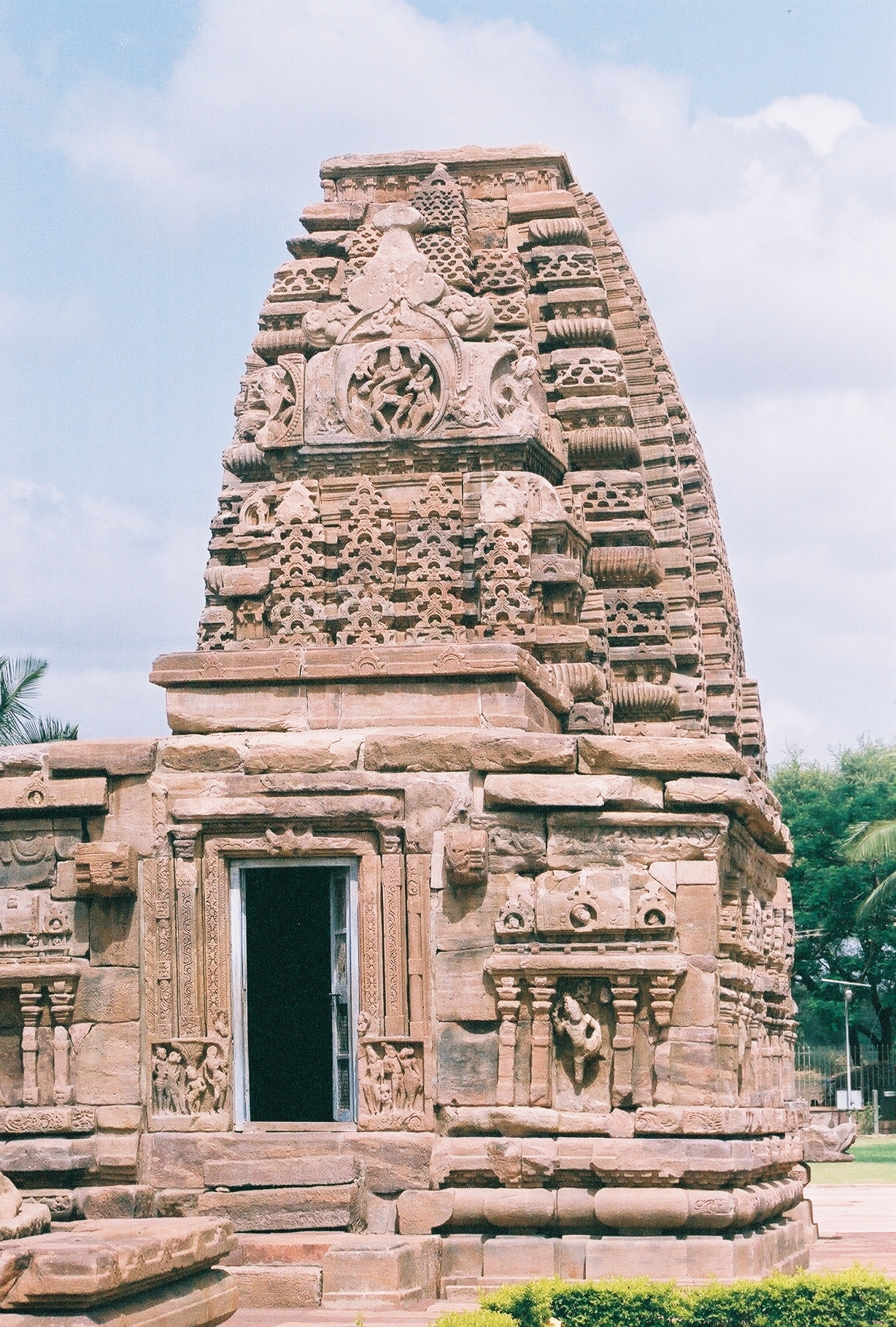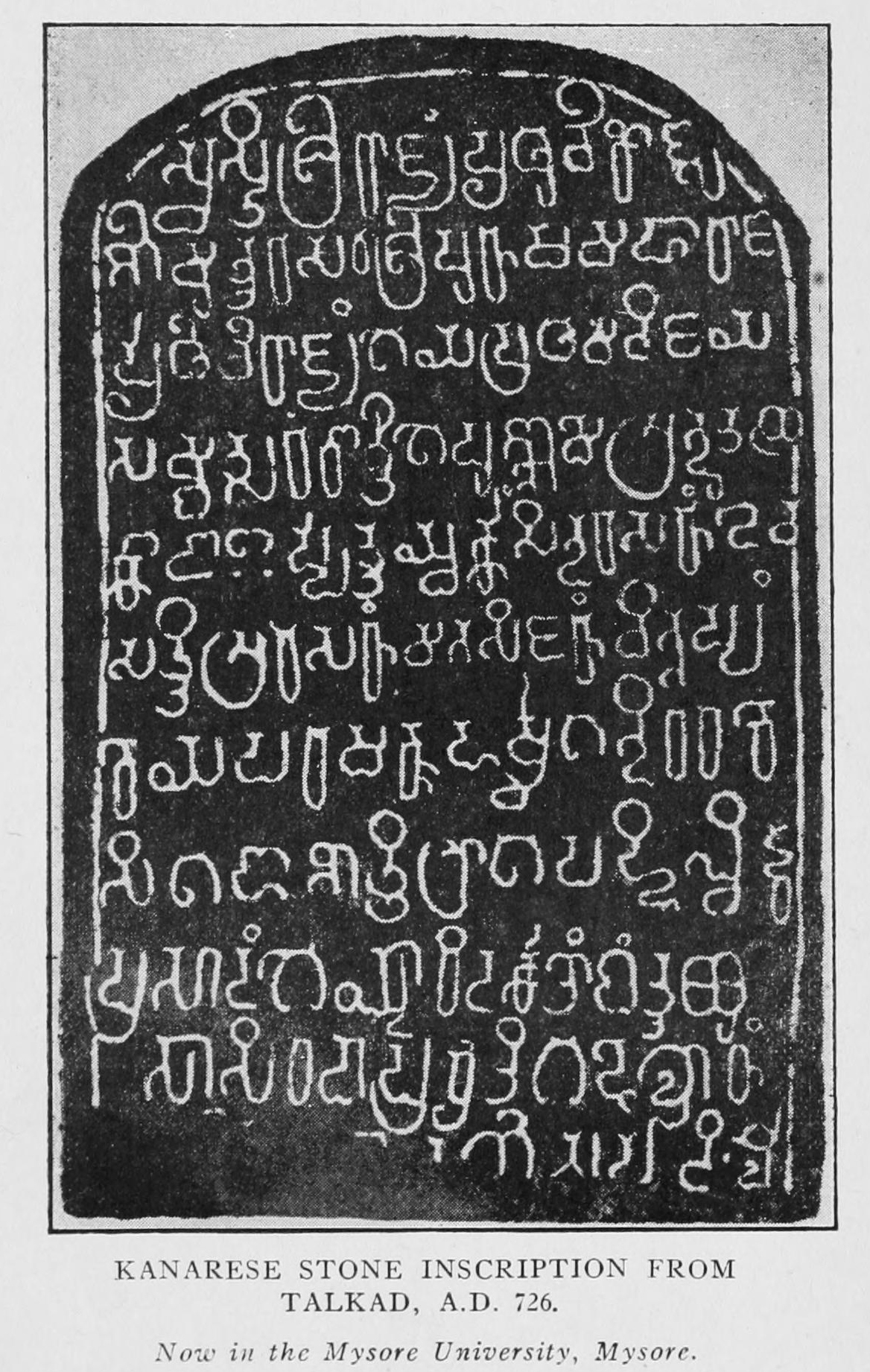|
Kambarasa
Kambarasa also known as ''Stambha'', was a member and prince of the Rashtrakuta dynasty. He was the eldest and first son of Dhruva Dharavarsha his illustrious father, and was given the governorship of the region of Gangavadi. He had always longed for the Rashtrakuta throne in his youth, and wanted the throne for himself after his father's death, but was defeated by his younger brother, Govinda III, but was spared by him, and once more was allowed to govern Gangavadi.From two records of 808, Reu (1933), p64 Struggle for the throne According to the Navasari record, Kambarasa went to war having formed an alliance of twelve chiefs. Shivamara II of the Western Ganga Dynasty of Talakad had joined hands with Kambarasa, but after the defeat was he imprisoned for a second time by the Rashtrakutas while Kambarasa was spared and pardoned by his younger brother, Govinda III Govinda III (reign 793–814 CE) was a famous Rashtrakuta ruler who succeeded his illustrious father Dhruva D ... [...More Info...] [...Related Items...] OR: [Wikipedia] [Google] [Baidu] |
Dhruva Dharavarsha
Dhruva (ruled 780–793 CE) was one of the most notable rulers of the Rashtrakuta Empire. He ascended the throne after replacing his elder brother Govinda II. Govinda II had become unpopular among his subjects on account of his various misconducts as a ruler, including excessive indulgence in sensual pleasures. This according to the historian Kamath is evident from the Karhad plates of Krishna III.Kamath (2001), p75 The Dhulia grant of 779 and Garugadahalli inscription of 782 proclaim Dhruva the emperor. Though some historians claim that Dhruva revolted and grabbed the throne,Reu (1933), p62 other historians feel the transition of the throne from Govinda II to Dhruva was peaceful and may have happened willingly. Dr. P. B. Desai and K. V. Subrahmanya Aiyar in Kamath (2001), p75 He earned titles like ''Kalivallabha'', ''Srivallabha'', ''Dharavarsha'', ''Maharajadhiraja'' and ''Parameshvara''. Success in north and east Dhruva Dharavarsha had a high political aspiration and he ac ... [...More Info...] [...Related Items...] OR: [Wikipedia] [Google] [Baidu] |
Rashtrakuta Dynasty
Rashtrakuta (IAST: ') (r. 753-982 CE) was a royal Indian dynasty ruling large parts of the Indian subcontinent between the sixth and 10th centuries. The earliest known Rashtrakuta inscription is a 7th-century copper plate grant detailing their rule from manapur a city in Central or West India. Other ruling Rashtrakuta clans from the same period mentioned in inscriptions were the kings of Achalapur and the rulers of Kannauj. Several controversies exist regarding the origin of these early Rashtrakutas, their native homeland and their language. The Elichpur clan was a feudatory of the Badami Chalukyas, and during the rule of Dantidurga, it overthrew Chalukya Kirtivarman II and went on to build an empire with the Gulbarga region in modern Karnataka as its base. This clan came to be known as the Rashtrakutas of Manyakheta, rising to power in South India in 753 AD. At the same time the Pala dynasty of Bengal and the Prathihara dynasty of Malwa were gaining force in eastern and ... [...More Info...] [...Related Items...] OR: [Wikipedia] [Google] [Baidu] |
Mysore State
Mysore State, colloquially Old Mysore, was a state within the Dominion of India and the later Republic of India from 1947 until 1956. The state was formed by renaming the Kingdom of Mysore, and Bangalore replaced Mysore as the state's capital. When Parliament passed the States Reorganisation Act in 1956, Mysore State was considerably enlarged when it became a linguistically homogeneous Kannada-speaking state within the Republic of India by incorporating territories from Andhra State, Bombay State, Coorg State, Hyderabad State, and Madras State, as well as other petty fiefdoms. It was subsequently renamed Karnataka in 1973. History The Kingdom of Mysore was one of the three largest princely states in British India. Upon India's independence from Britain in 1947, Maharaja Jayachamarajendra Wadiyar signed the instrument of accession, incorporating his realm with the Union of India, on 15 August 1947. The territories of the erstwhile princely state of Mysore were then reconstitu ... [...More Info...] [...Related Items...] OR: [Wikipedia] [Google] [Baidu] |
Govinda III
Govinda III (reign 793–814 CE) was a famous Rashtrakuta ruler who succeeded his illustrious father Dhruva Dharavarsha. He was militarily the most successful emperor of the dynasty with successful conquests-from Kanyakumari in the south to Kannauj in the north, from Banaras in the east to Broach ( Bharuch) in the west. He held such titles as ''Prabhutavarsha'', ''Jagattunga'', ''Anupama'', ''Kirthinarayana'', ''Prithvivallabha'', ''Shrivallabha'', ''Vimaladitya'', ''Atishayadhavala'' and ''Tribhuvanadhavala''. From the Someshvara inscription of 804 it is known that Gamundabbe was his chief queen. Govinda III was undoubtebly the ablest of the Rashtrakuta emperors, unrivalled in courage, generalship, statesmanship, and martial exploits.The Rashtrakutas would reach their absolute peak under his rule. War of Succession Though Govinda III became the emperor it was not before having to face some internal family feuds. Govinda III ascended the throne in A.D. 793 and, as was expected ... [...More Info...] [...Related Items...] OR: [Wikipedia] [Google] [Baidu] |
Bisheshwar Nath Reu
Bisheshwar Nath Reu (2 July 1890 – 1947) was an Indian historian. He started his career as an assistant to Gaurishankar Hirachand Ojha, and learned the ancient Dingal language from him.''Rajasthan History and Culture:An Encyclopaedia'', Fourth Edition, Jain Prakashan Mandir, Jaipur, 2013, p. 422 Later, he was appointed as the head of the Department of History (by Maharaja Sumer Singh of Jodhpur), Department of Archaeology (by Maharaja Ummed Singh of Jodhpur), the Sardar Museum, the ''Pustak Prakash'' (Manuscript Library) and Sumer Public Library of the erstwhile princely state of Jodhpur. ''Mahamahopadhyaya'' He made his mark as a historian, epigraphist, numismatist and Sanskritist, he is best known for his history of Marwar. Authorship Reu published ''Bharat ke Prachin Rajvansh'' with the three volumes being released in 1920, 1921 and 1935 respectively. Raja Bhoja was published in 1932, these books were written in Hindi. In 1933, a revised and enlarged version of material fro ... [...More Info...] [...Related Items...] OR: [Wikipedia] [Google] [Baidu] |
Shivamara II
Shivamara II was the son of Sripurusha and ruled the Western Ganga Dynasty from 788 – 816 C.E. He was also a noted scholar in Kannada, Sanskrit and Prakrit. He succeeded to the Ganga throne during a time when the Rashtrakuta were the empire on the rise in South India and the Deccan. Conflict with Rashtrakuta The Rashtrakuta monarch Dhruva Dharavarsha defeated Shivamara in Mudagunduru and took the Ganga king captive. The Rashtrakuta then took direct control of the Gangavadi with the appointment of Kambharasa, son of Dhruva Dharavarsha as its governor. He was later released, only to be imprisoned again during the rule of Govinda III when he refused to pay the Rashtrakuta tribute. Shivamara II again was released only to defy the Rashtrakuta yoke by waging wars. He died fighting them in 816. Manne near Bangalore was one of his capitals during this time. In spite of being imprisoned on multiple occasions and being at constant war, he found the time to write literary works, inc ... [...More Info...] [...Related Items...] OR: [Wikipedia] [Google] [Baidu] |
Western Ganga Dynasty
Western Ganga was an important ruling dynasty of ancient Karnataka in India which lasted from about 350 to 1000 CE. They are known as "Western Gangas" to distinguish them from the Eastern Gangas who in later centuries ruled over Kalinga (modern Odisha and Northern Andhra Pradesh). The general belief is that the Western Gangas began their rule during a time when multiple native clans asserted their freedom due to the weakening of the Pallava empire in South India, a geo-political event sometimes attributed to the southern conquests of Samudra Gupta. The Western Ganga sovereignty lasted from about 350 to 550 CE, initially ruling from Kolar and later, moving their capital to Talakadu on the banks of the Kaveri River in modern Mysore district. After the rise of the imperial Chalukyas of Badami, the Gangas accepted Chalukya overlordship and fought for the cause of their overlords against the Pallavas of Kanchi. The Chalukyas were replaced by the Rashtrakutas of Manyakheta in 75 ... [...More Info...] [...Related Items...] OR: [Wikipedia] [Google] [Baidu] |

_of_Rashtrakuta_King_Govinda_III_at_Mavali.jpg)
